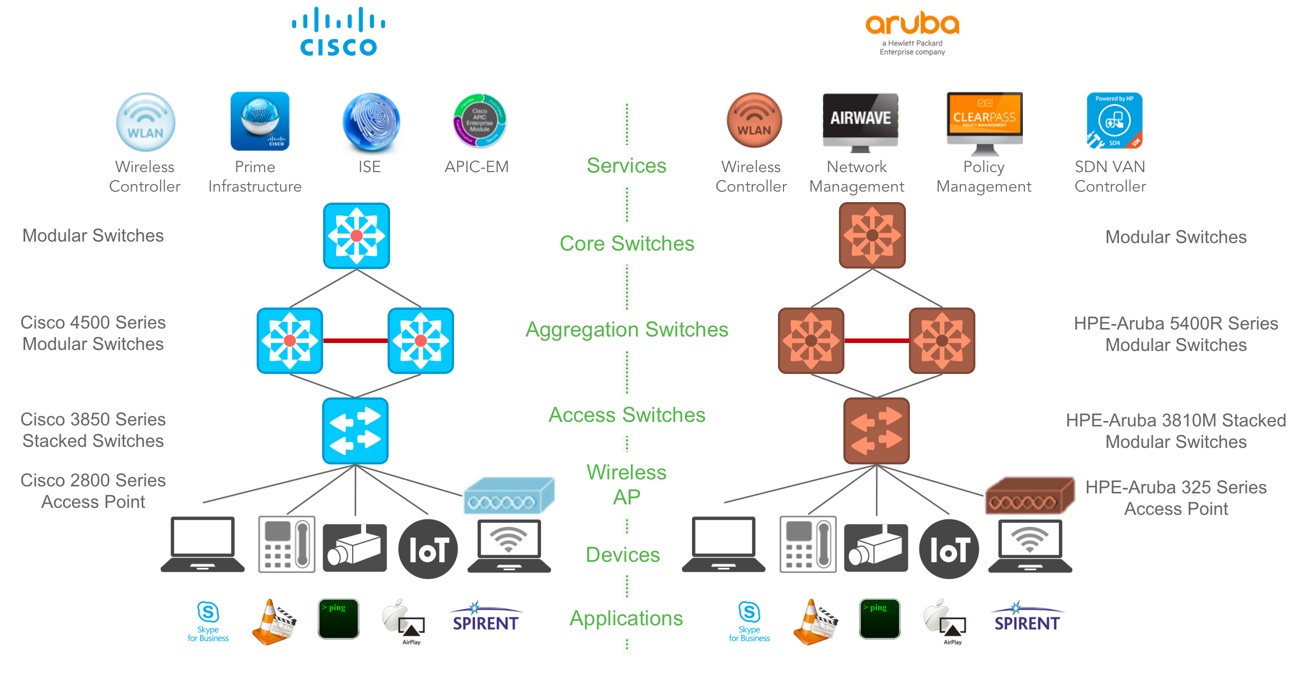































Proliferation of mobile devices, cloud moving enterprises and data hungry applications are creating the need for the next generation of enterprise campus infrastructure. Cisco is always ahead of the curve when it comes to providing all these capabilities way before the competition. Cisco Digital Network Architecture (DNA) offers the scalability, resiliency and ease of operation without compromising the security.
To build the future-proof networks with high-level applications and services, you need a strong underlying network foundation. Resilient underlay infrastructure is an absolute necessity to provide a robust networking pipeline. Cisco believes in high availability at every level of your enterprise architecture and provides these resiliency options at every level of your underlying switching infrastructure. Numerous access switches, aggregation switches and core switches form the foundation of your network infrastructure. This is where most of your network's arteries converge and go through the core and aggregation switches.
To achieve the highest level of resiliency, Cisco access switches offer unique stacking mechanisms like power sharing using PowerStack-no other competition in the market offer this feature-and data stacking using StackWise. Similarly, Cisco core and aggregation modular switches offer Virtual Switching System (VSS) stacking technology to allow for sub-second failover in case of unfortunate failure scenarios like power down, hardware failure or link failure.

The independent test lab, Miercom, recently evaluated Cisco's modular stacking technology against the HPE-Aruba's modular stacking technology and published the results here.
As expected, Cisco honored its promise to offer sub-second failover in case of outage with no impact on the connected wired and wireless devices such as laptops, IP phones, video cameras, wireless APs and other IoT devices.
HPE-Aruba failed to provide the box level redundancy using redundant management module. On top of that, HPE-Aruba took a whopping ~120 seconds of downtime. This lead all of the Wired, Wireless, IoT devices and wired-wireless user devices disconnected from the network! End user applications such as: Skype for Business Audio/Video Call, Video Streaming and Screen Mirroring got severely impacted in case of HPE-Aruba.

With Cisco, there was only a sub-second failover. This meant that it showed no impact on applications and the end user experience.
The point is, the Miercom report proves that Cisco offers a robust network infrastructure with resiliency and simplicity that offers a strong underlay that is ready for today and tomorrow's applications. The Cisco stacking capabilities offers extremely resilient solution to withstand failures and offer sub second failover without impacting users and applications.
Please download complete Miercom report here.
 Tags quentes :
Cisco Digital Network Architecture
Miercom report
StackWise
Cisco Virtual Switching System
Tags quentes :
Cisco Digital Network Architecture
Miercom report
StackWise
Cisco Virtual Switching System